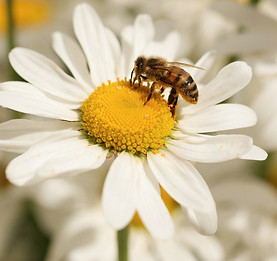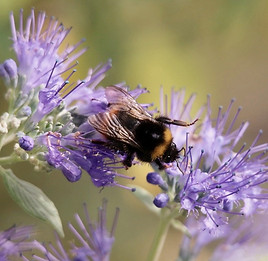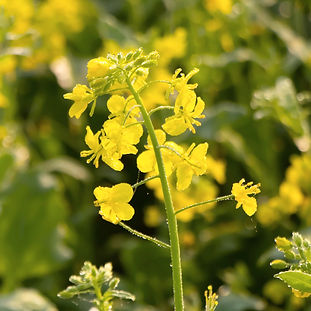
Environmental Range
An environmental range with wildflowers and green manures offers a sustainable approach to enhancing soil health, promoting biodiversity, and supporting ecosystems. Wildflowers, such as poppies, cornflowers, and oxeye daisies, attract beneficial insects like pollinators and predators, helping control pests and improve crop yields. Green manures, such as legumes and rye, are planted to enrich the soil by fixing nitrogen, preventing erosion, and reducing weed growth. These plants not only restore vital nutrients to the soil but also provide a habitat for wildlife, creating a balanced and resilient agricultural environment. By integrating wildflowers and green manures, farmers can enhance productivity while supporting environmental health.
Wildflowers on Allotments

In allotments, traditional wildflower meadows are often unsuitable due to the vigorous growth of meadow grasses, which can quickly dominate. Instead, a more manageable and visually appealing option is to create borders using biennial and perennial wildflowers.
Cornfield annual mixtures, featuring vibrant blooms like Poppies and Cornflowers, are also an excellent choice for allotment soils. These can be sown in either spring or autumn, providing stunning flowers the following summer.
A Different Approach

Wildflowers play a vital role in supporting biodiversity, offering essential habitats for pollinators like bees and butterflies, as well as other wildlife. They contribute to healthier ecosystems by improving soil structure, preventing erosion, and enriching the land. Additionally, wildflowers attract beneficial insects that provide natural pest control, reducing the need for chemicals and supporting sustainable farming practices.
Benefits of Wildflowers

Growing wildflowers in an allotment offers numerous benefits. Species like Foxgloves and Teasels attract a variety of insects, including ladybirds, which naturally help control aphid populations. Wildflowers such as Viper’s Bugloss are particularly valuable for attracting pollinators like bees, enhancing pollination and boosting crop yields.
Allotments can also serve as vital havens for local wildlife. Simple additions like log piles, insect houses, and small ponds provide shelter and resources for various species, creating a thriving, biodiverse ecosystem.
Why should you Grow Wildflowers on Allotments?
What Flowers should you use on Allotments?

Marigolds
The roots of Marigolds produce chemicals that are released in to the soil and have the capability of repelling root knot nematodes.

Sunflowers
These plants are easy to grow and are rich in nectar, making them highly attractive to a wide variety of pollinators.

Nasturtiums
It is an easy-to-grow annual, with both its leaves and flowers being edible. This plant offers versatility in the garden and dishes.

Yarrow
It is useful for attracting beneficial insects like ladybirds and hoverflies, which help control pest populations in the garden.
Green Manures on Allotments

Planting green manure in allotments offers several benefits. These crops improve soil health by adding organic matter, boosting fertility, and preventing nutrient depletion. Legumes, in particular, fix nitrogen, reducing the need for chemical fertilisers. Green manures provide ground cover, suppress weeds, and reduce soil erosion.They also improve soil structure, prevent compaction, and enhance water retention. When green manures decompose they release vital nutrients that support future crops, making them an eco-friendly way to maintain productive allotments.
A Different Approach

Green manures offer several benefits, including attracting pollinators, which helps support biodiversity in the soil ecosystem. They provide valuable soil cover, which helps retain moisture and protects against erosion. Additionally, green manures suppress weed growth by outcompeting weeds for nutrients and space, ensuring that the soil remains healthier and more productive.
Benefits of Green Manure

Green manures are valuable for improving soil health and fertility. They work by absorbing essential nutrients from the soil and storing them in the plant’s cells and root nodules. When the plants are tilled back into the soil and allowed to decompose, these nutrients are gradually released, enriching the soil and improving its structure. Certain green manure plants, especially legumes, have the ability to fix nitrogen from the air, converting it into a form that can be readily absorbed by plants. This process helps reduce the need for synthetic fertilisers, promoting a more sustainable and cost-effective farming practice.
Why should you Grow Green Manures on Allotments?
What Green Manures should you use on Allotments?

Buckwheat & Phacelia
Buckwheat suppresses weeds, and attracts pollinators, while Phacelia enhances soil fertility, and supports beneficial insects.

Legumes
Legumes fix nitrogen in the soil, improve soil fertility, and provide a valuable food source for pollinators and wildlife.

Rye
Rye grows well in low temperatures, making it an excellent choice for cooler climates, but it can be challenging to get rid of.

Mustards
While it can be very effective, mustard can sometimes interfere with crop rotation due to its persistence.




